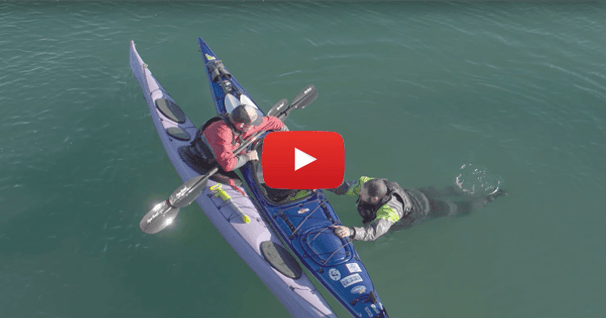The 5 SUP Pointers for River Paddle Boarding
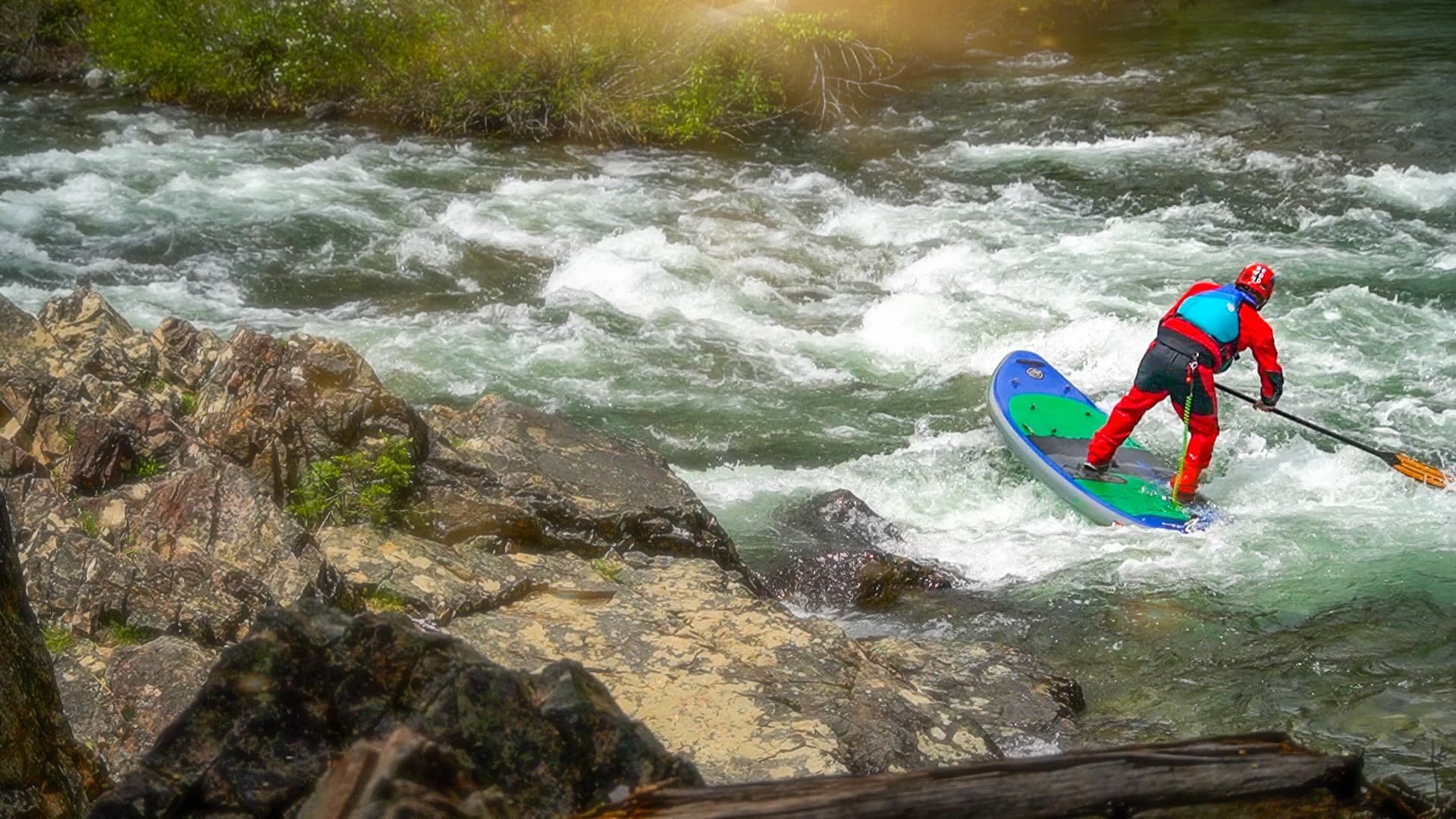
*This article is sponsored by Sawyer Paddles and Oars
Once you get on moving water it's hard to go back to flat water paddle boarding.
This is what I always tell people who question why I run rivers on a paddle board. And it's true. The feeling of moving with the current, peeling in and out of eddies, and navigating rapids on a board is exhilarating.
Exploring wild places with little more than a backpack's worth of gear has always been what being outdoors means to me. Exploration, adventure, challenging myself to go further and faster and more miles. As a kid I loved scrambling on the granite above Tahoe, and mountain bike riding, and back-country skiing. I have thru-hiked the Pacific Crest Trail and have kayaked the entire 1000-mile length of the Sea of Cortez, twice. But it wasn't until I discovered the river that I found my passion. I discovered the river with a SUP board.
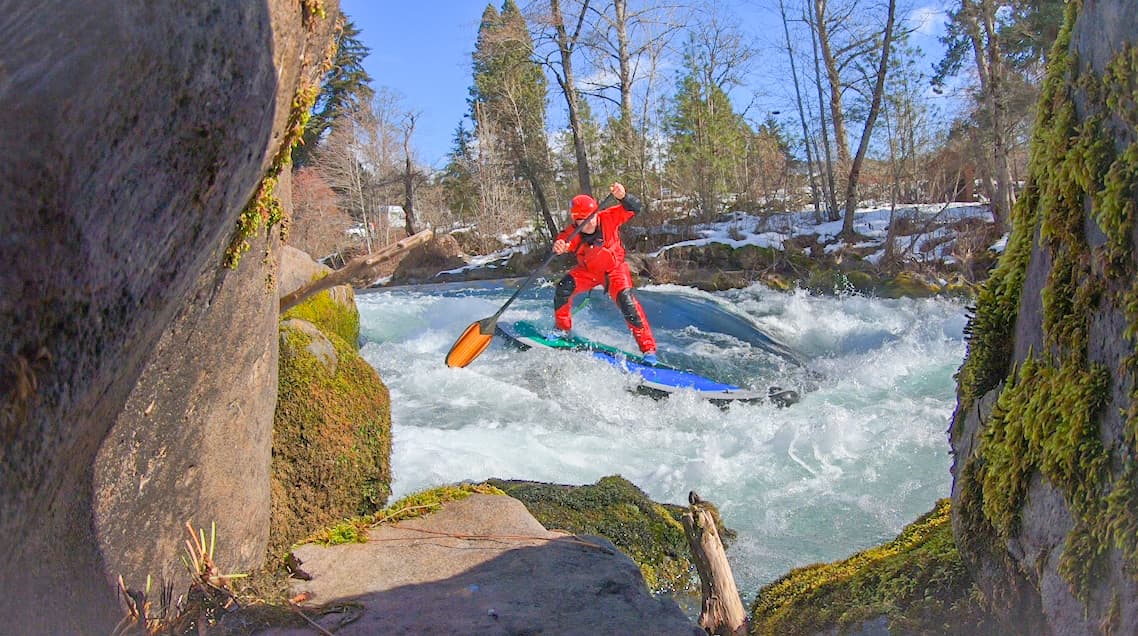
Way back in 2013 my neighbor in Bend, Oregon where I was living introduced me to SUP. She said it was fun and a good workout. We went to the lakes near town. It was fun. We were able to carry our gear to the water without having to worry about boat trailers. And we were able to see fish and underwater rock formations from a standing perspective. Good fun. My brain started turning when I realized you could lash a drybag to the board to do an overnight trip. Could a paddle board be used to do multi-day trips? Expeditions? Rivers?
If you are going to do a multi-day paddling trip in Central Oregon it is going to be on rivers, including the Deschutes and the John Day. But I knew little about rivers then. For me, rivers were paddled by whitewater kayakers cartwheeling in holes and dropping waterfalls, or rafters with a ton of gear. I didn't like the idea of bashing my face on rocks in a kayak, nor did I like the idea of floating on a barge of lawn chairs, dry bags and coolers full of booze. Could I use a paddle board to do a river trip with little more than a backpack’s worth of gear?
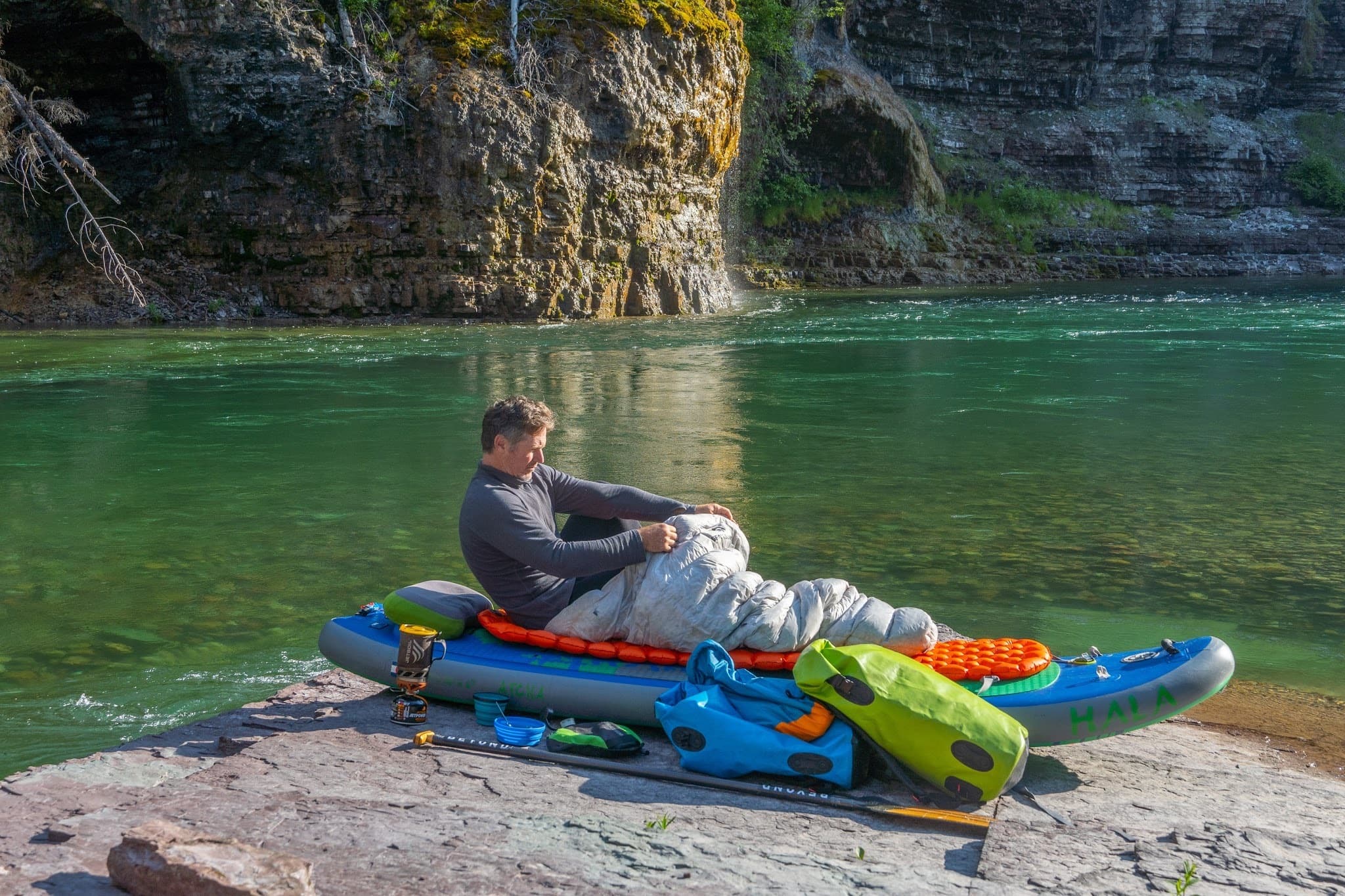
I asked Google. At the time there were a handful of YouTube videos showing Dan Gavere navigating big drops on his board, and Mike Tavares instructing how to surf river waves on a SUP board. But there wasn't anything to suggest people were running rivers, especially as multi-day “SUP-support” trips. So, with ambition but little practical knowledge I went on my first river trip to the John Day and did a 120-mile 4-nighter through a remote desert gorge. I was hooked. But after falling off and swimming most of the rapids, I knew I needed to learn how to actually paddle rivers.
Since then I have had the fortune to chase rivers throughout the US and Canada on a board, as well as Europe, New Zealand, Japan, and Chile. I have aligned myself with river SUP brands, and have offered clinics to teach people river SUP fundamentals.
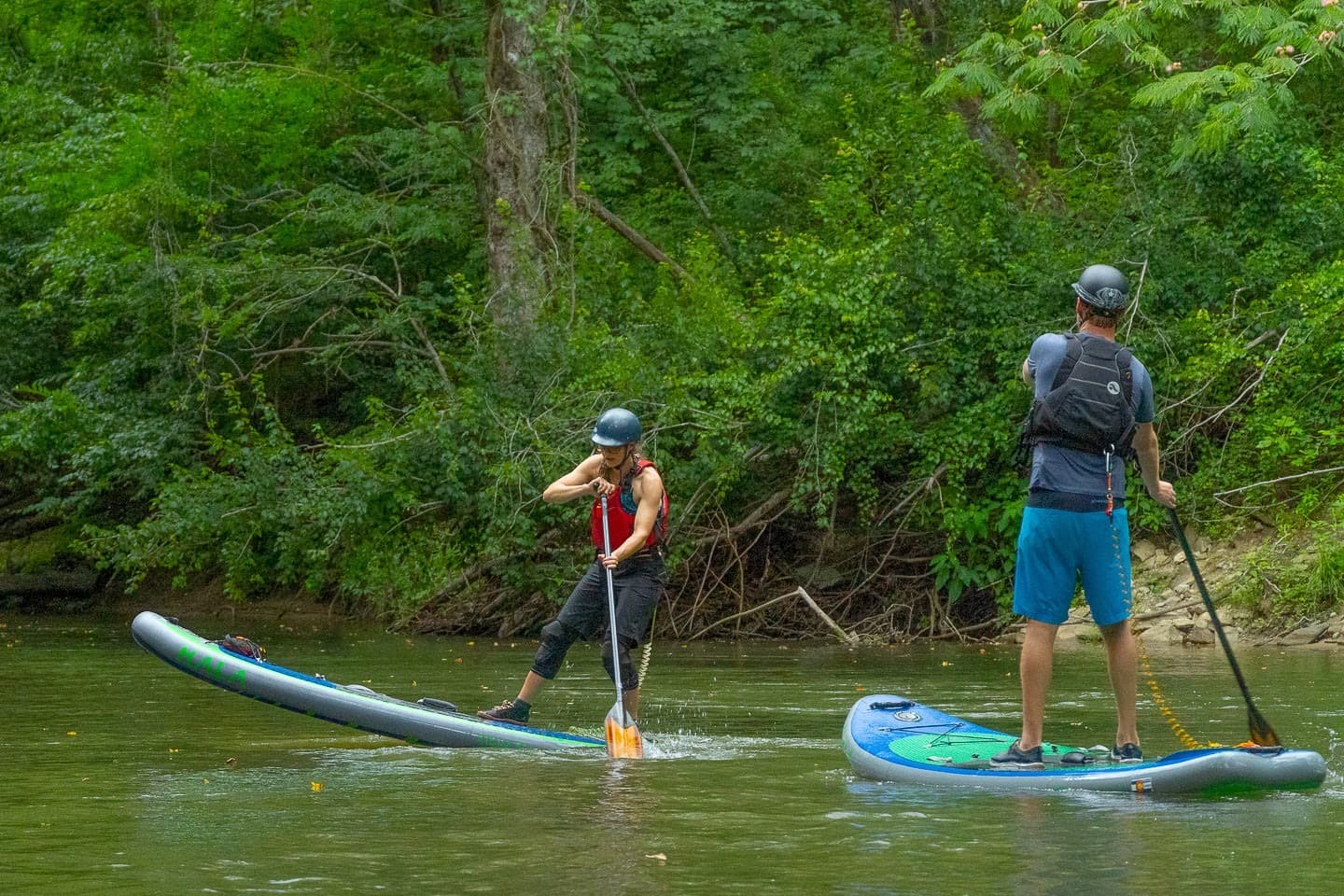
What follows is my 5 pointers to river SUP paddling, the things I have found to set up people for success to run rivers on a paddle board.
- Proper river gear for SUP paddling.
- Learn about swiftwater navigation and hydrology from river professionals and through clinics.
- Stay low and keep your paddle in the water.
- Practice maneuvers in eddies, whitewater parks, and on river waves.
- Experiment with your style, and discover where you can go
Proper river outfitting of gear.
Rivers are a unique environment and require the consideration whitewater boaters have given over the generations to remain as safe on the river as possible. This includes river specific boards, paddles, and safety equipment.
Yes, river SUP is paddle boarding but it is also a river sport that get's a lot of it's influence from kayaking and rafting. It's more like whitewater canoeing than traditional paddle boarding.
Most down-river SUP paddlers prefer river specific inflatable boards, ISUPs. Of course the inflatable story of easy travel and storage applies, but having a board that does not break upon impact with rocks is important. Plus, falling on an inflatable is easier on your body and paddle than falling on a “hard board,” or epoxy.
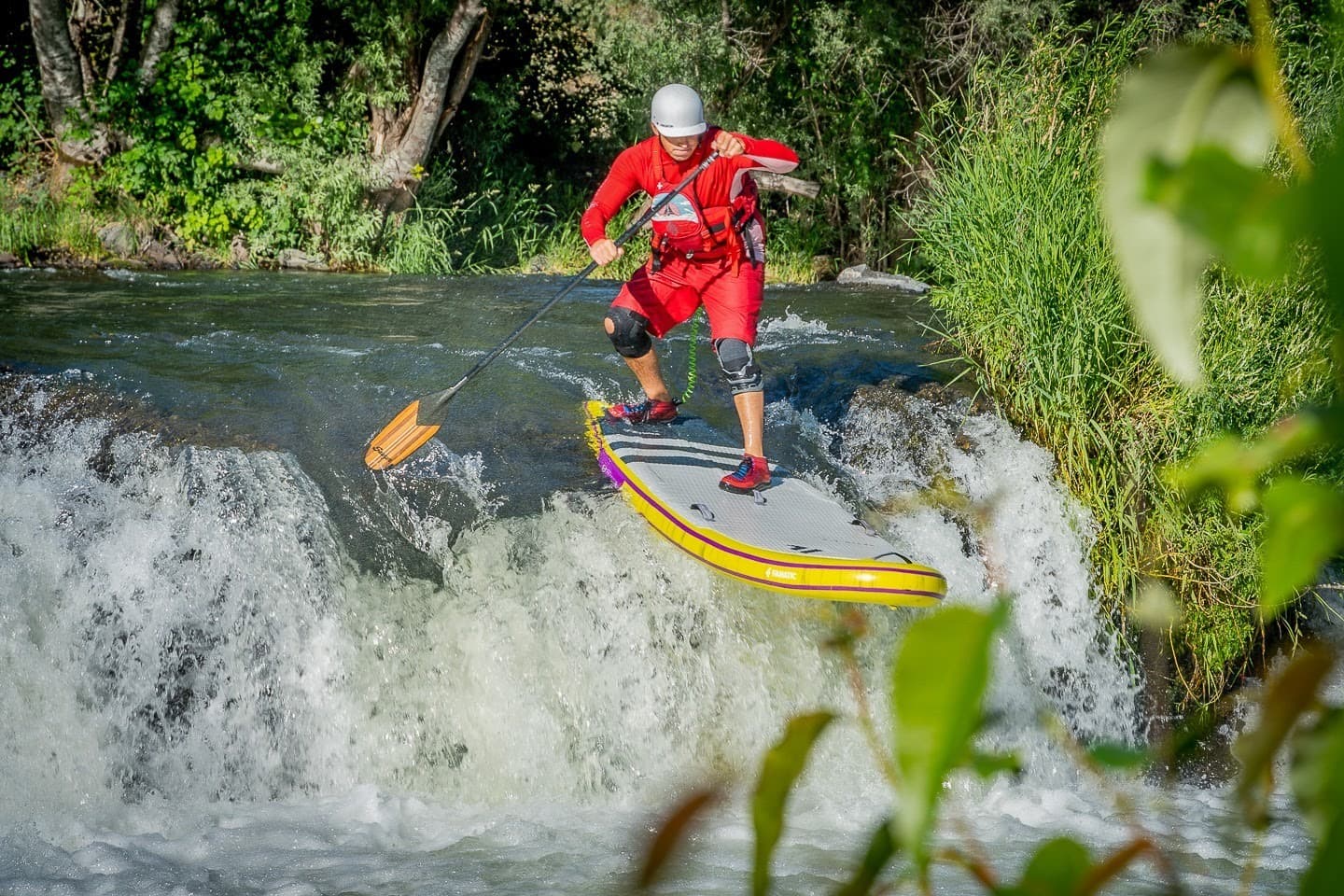
River surfers or paddlers who do squirt maneuvers in a slalom course may prefer epoxy boards for their low volume rails and reduced buoyancy. I liken it to a mountain biker with full suspension rather than a road biker with a rigid frame.
Regardless of the board being inflatable or epoxy, the board should be durable, and river oriented. Look for whitewater boards with a high rocker profile, durable deck pad, handles that make the board easier to handle on and off the water, and a fin configuration that is intended for navigating rivers without breaking.
For most down-river running I use the Hala Atcha ISUP that is 9'6” and 36” wide. One very nice feature is its spring loaded retractable fin system, the StompBox. Ride over rocks and the fin is pressed inside the board only to spring back out after the impact.
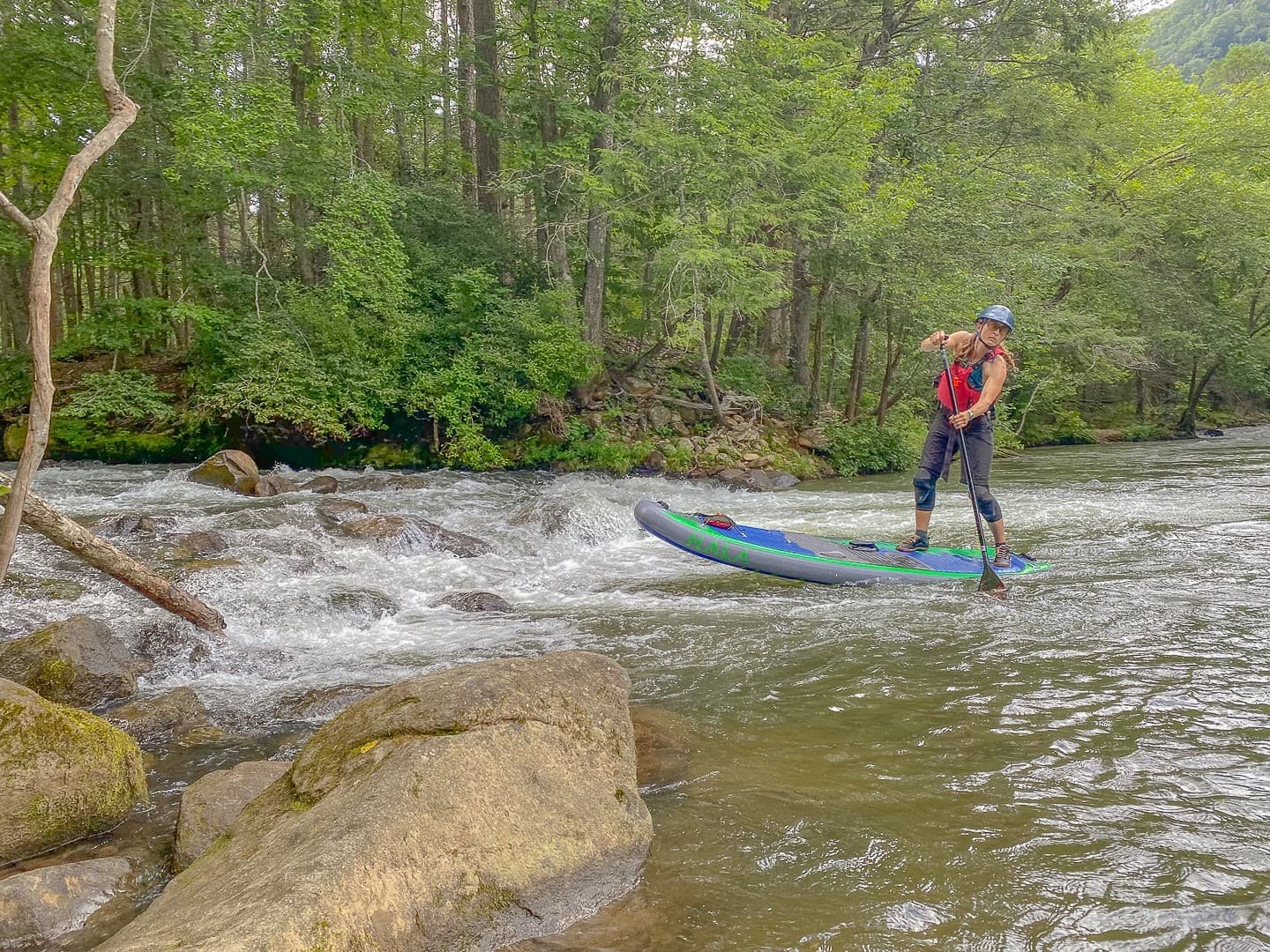
Many beginner river SUP paddlers ask if they can bring their epoxy flat water board to the river with long fixed tracking fins. Please don't. You will thrash the board before you know it and potentially put yourself in jeopardy not being able to navigate. Most river boards are less than 10 feet long. The most popular down river size is 9'6.
Traditional SUP paddles are long with a blade that is raked forward to catch the water in front of the board and pull for momentum. Release at the toes and reach forward again. Over and over all day to get where you are going. River SUP paddles are built more durable and are designed to maneuver along the foot box rather than just generate forward momentum.
River paddles like the Sawyer SUPER Styk tend to be shorter with the grip not much taller than “helmet height.” The point is less about forward momentum and more about maneuvering, cross bow paddling, bracing, drawing lateral strokes, and feathering the blade for subtle adjustments. The lower your center of gravity is the more stable you will be. A shorter paddle length will force you to stay low.
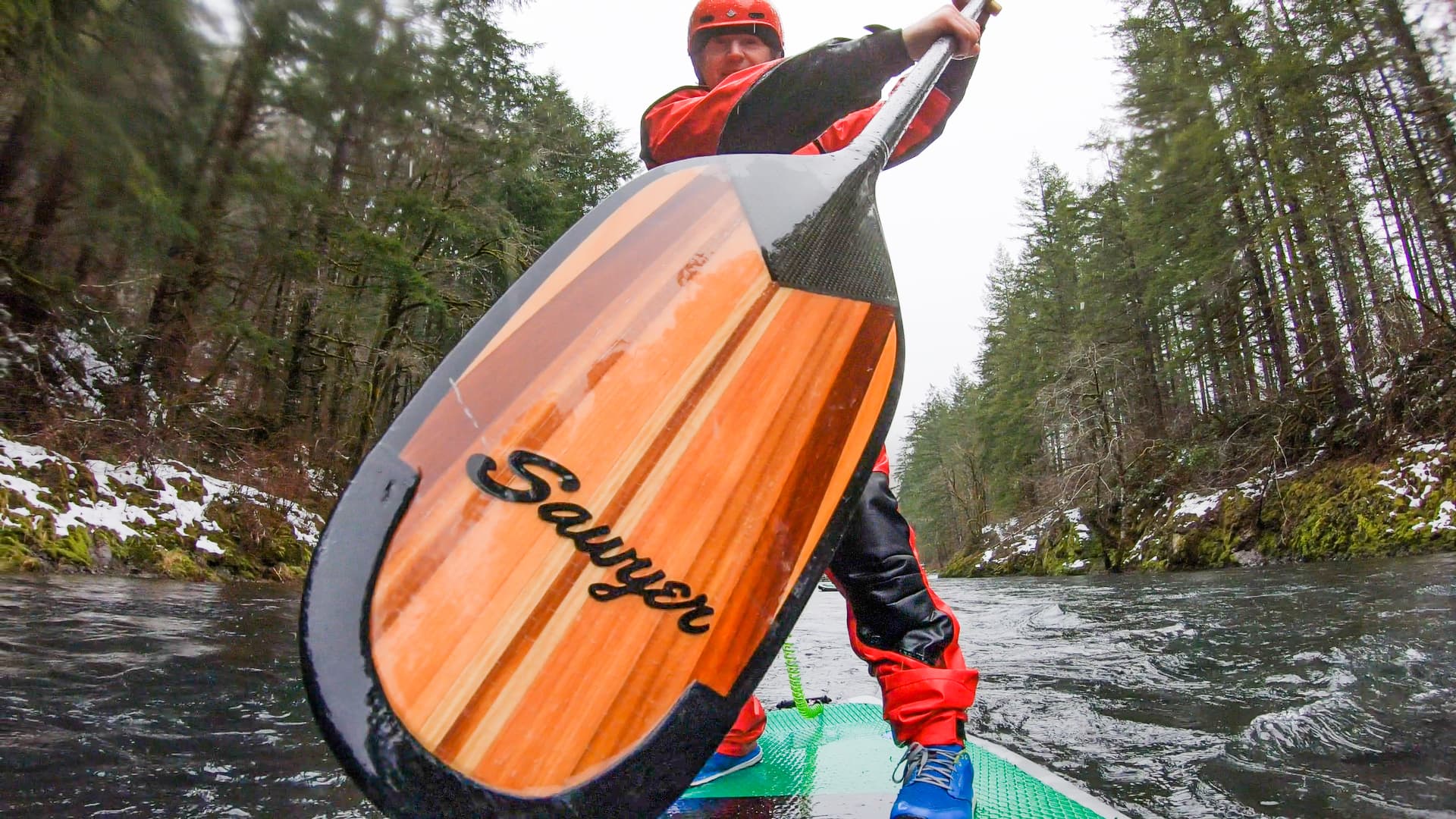
The SUPER Styk has a blade river paddle raft guides are familiar with. Most notably, it has zero rake, it's flat unlike most other SUP paddles. This gives the paddler more precision around the foot box where much of the maneuvering in whitewater takes place.
Wear what many experienced whitewater boaters wear, not a lake paddle boarder. River running is not about bikinis and flip-flops. My acronym for the “river SUP uniform” is S.H.I.P.P.S.
* Shoes, always wear closed toe shoes to protect from foot injuries. Kicking rocks with your exposed toes makes it hard to keep standing on your board.
* Helmet, always wear a properly fitted helmet. Whitewater specific helmets are good, but multipurpose water/snow/trail helmets work well for many river outings.
* Insulation, dress for both the water and ambient temperatures. This may mean a drysuit during spring runoffs, a full wetsuit, a farmer john, or simply some board shorts on those hot august days in the desert. Drysuits are nice because you can control your own thermoregulation with layers under the suit. But good suits are expensive and do make swimming cumbersome. Wetsuits are typically worn by surfers or those who swim more than stand. These suits keep you warm while in the water, but can be cold if worn paddling exposed to the wind.
* PFD, always wear a properly fitted Personal Floatation Device on moving water. Not an inflatable belt pack. Not tethered to your board. On you, always. Period.
* Padding of some sort is useful. I take most of the hits on my shins and knees, so that is where I put my pads. Unfortunately there is no best solution for paddling. I have found that G-form pads to be the most effective for protecting from scrapes, bumps and bruises.
* S is for signaling device, in the form of a whistle. Rivers are loud and communication is made difficult. A whistle and hand signals are useful.
Learning about river navigation and hydrology is vital in becoming a whitewater paddle boarder.
Moving in current puts you at the mercy of the river. Knowing how to identify hazards, and read the river to paddle efficiently comes with time and also comes from the advice of mentors and formal tutorials. When I was just learning I looked online for tips and pointers. Nobody in my area paddled boards the way I wanted to. Since then a number of organizations such as the ACA and a number of popular paddlers have created curriculum to teach river SUP. Asking questions, learning from the pros, and just getting in the river practicing is important. Let one clinic lead to another. Eventually you may get certified in swiftwater rescue, and become a paddling instructor yourself.
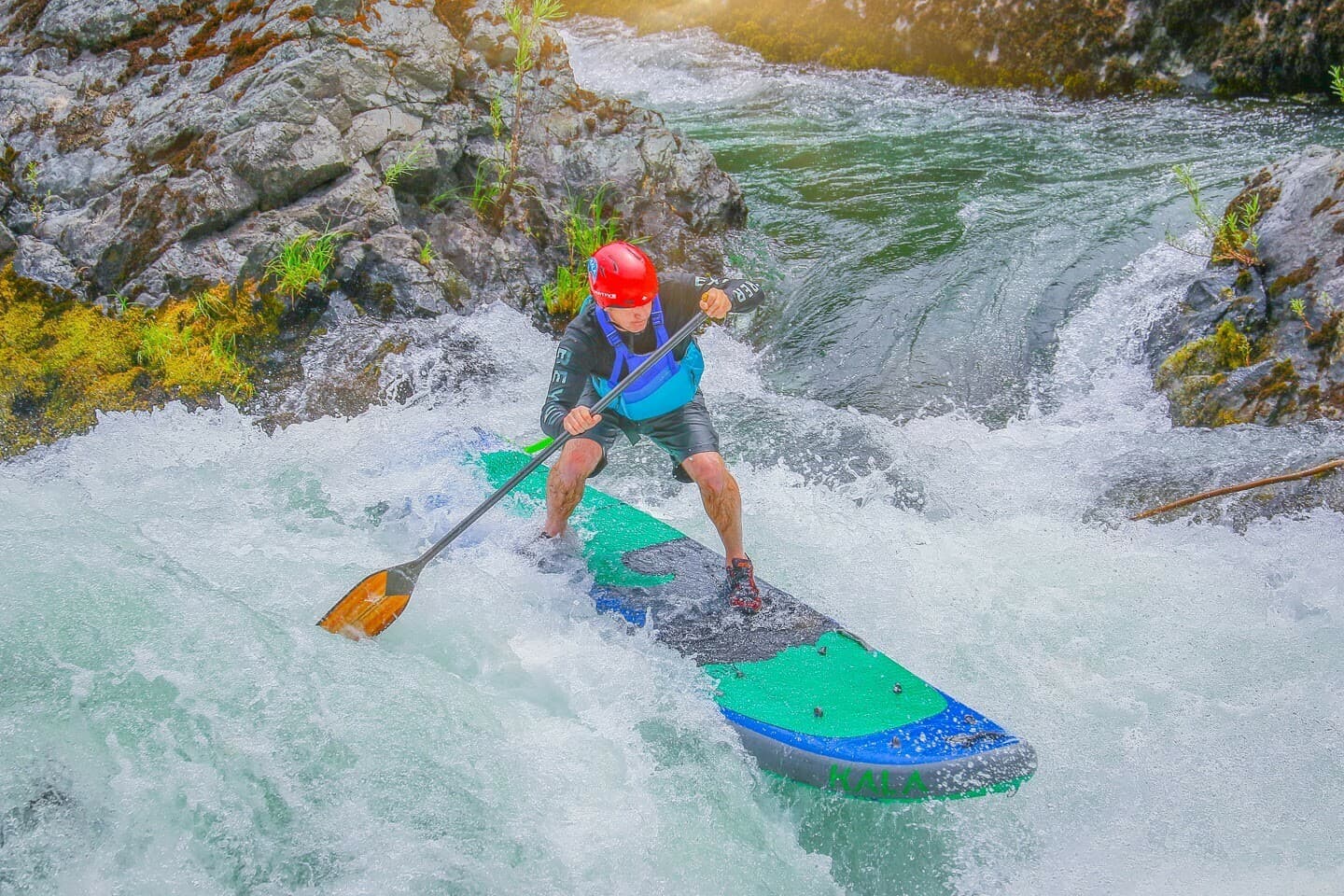
Staying low and keeping your paddle in the water
Staying low and keeping your paddle in the water is one important pointer I offer every river SUP paddler. Keeping your center of gravity over the board is key to stability, and being active with your paddle keeps you moving upright. Standing is a strong stance, but it's not the only one. I often encourage student paddlers to kneel on the board before standing in order to learn how to navigate the board, especially peeling in and out of eddies. Progress to one-knee exercisers, then stand.
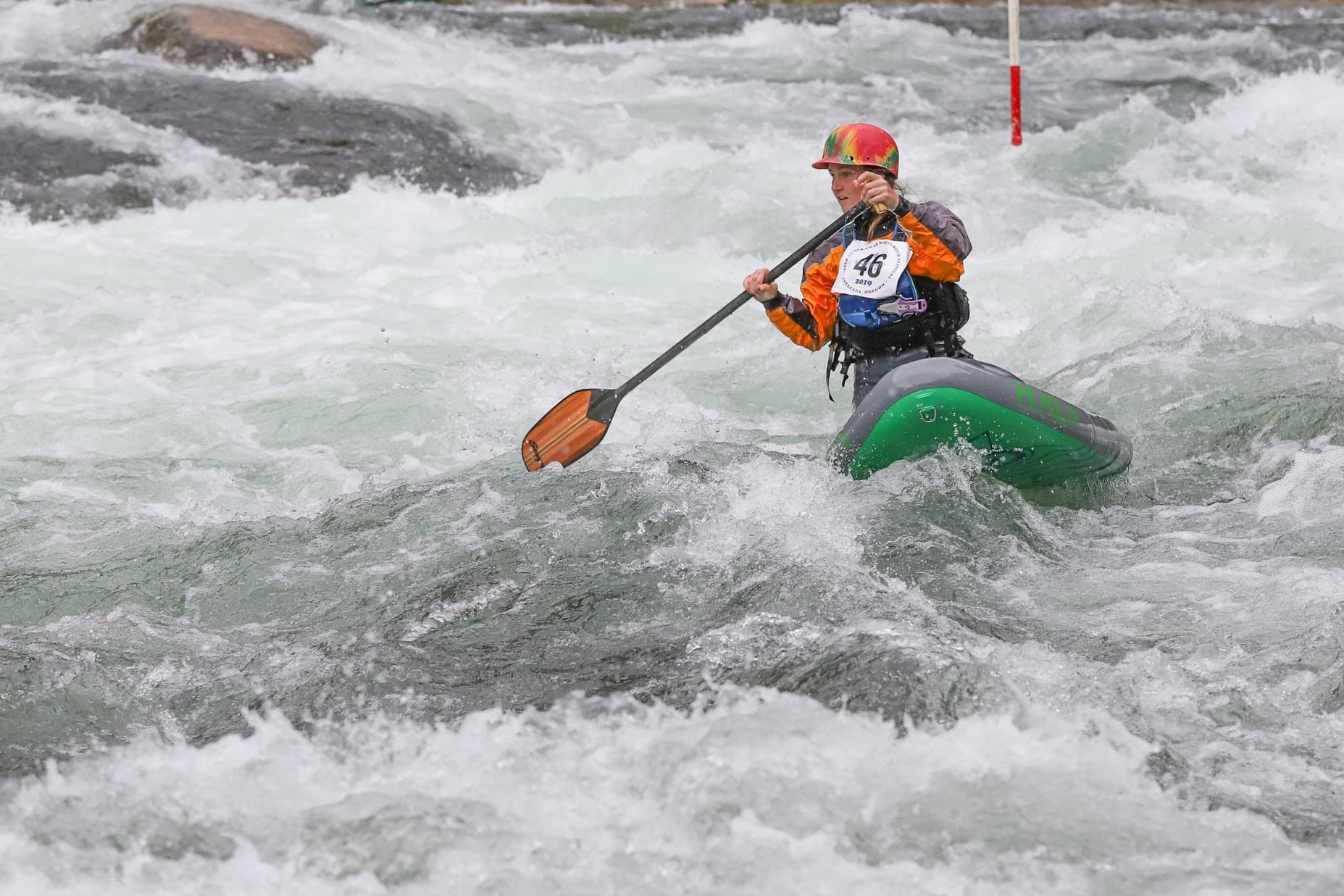
Don't mistake being low as merely bending at the waist. Sink your butt into your heels instead. Warm up by doing squats and lunges. This is why mountain bikers with strong legs or telemark skiers often learn to stand on rivers faster than even experienced boaters with abs of steel.
There is no shame in kneeling while running rapids. The point is to remain healthy and happy and paddle again the next day. Besides, the sport is too young to have purists.
Maneuvering the board in eddies and on waves is great training for down river running
You can get an amazing amount of experience quickly by going to a whitewater park like the ones in Bend, OR and Salida, CO, or by playing on a section of your local river with eddy lines and waves. Knowing how to lean into the current, shift your stance, pivot, fall and recover, use your paddle for both balance and leverage comes with time and miles. In a user friendly part of the river you can get both without having to set shuttle or commit to the logistics of river running, including finding paddling partners.
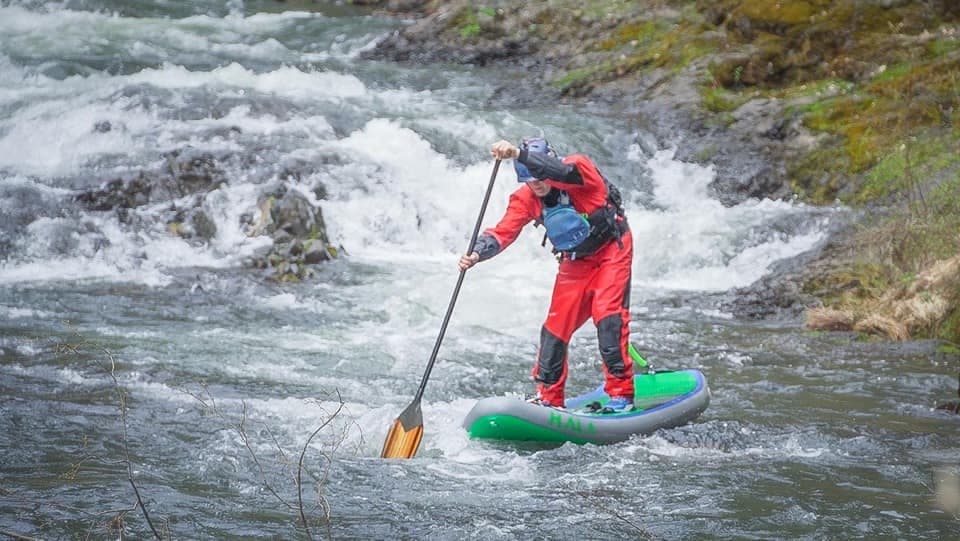
Experiment and find your own style.
For many river SUP paddlers, surfing is the only thing they do. For others, it's about multi-day trips. And for others, it's pushing the limits of technical whitewater. All these are great. Finding what you love about the sport is your own journey. For me, I wanted to do solo multi-day SUP-support expeditions. That led me to learn how to run whitewater without gear, which inturn led me to want to help build the community of river SUP paddlers around the world.
I tell people “get weird.” Experiment. See what happens when you pivot the board first on the tail, then the nose. Can you paddle the board flipped upside down? Can you run Class 2 or Class 3 or Class 1million? Find out. Go do it. Have fun. And learn the beauty that rivers offer.
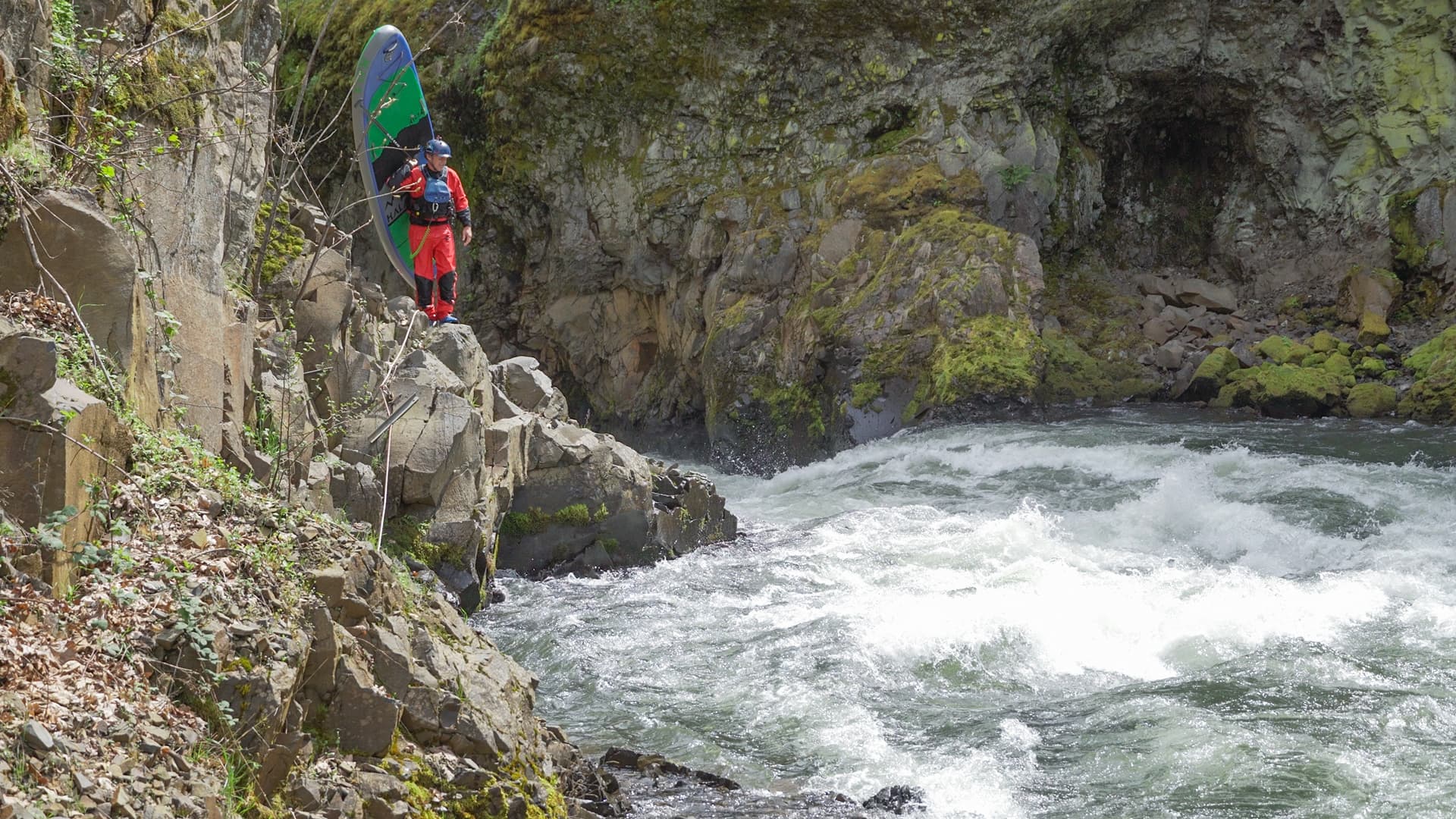
Paul Clark is SUPPAUL a river paddle boarder and content creator based out of Bend, Oregon. But he is more than likely found on the road in a van filled with paddling gear chasing rivers.
Related Articles
Whether you were new to paddling in 2018 or you're an experienced paddler, you can never stop learning.…
In this video, we're going to look at the best way to re-enter your kayak in case you flipped, and you…
By Claudia Kerckhoff Van WijkDirector, Madawaska Kanu Centre The "Canadian" on this page is not…
We're using the Old Town Appalachian to demonstrate the parts of a typical canoe. Bow vs.…

